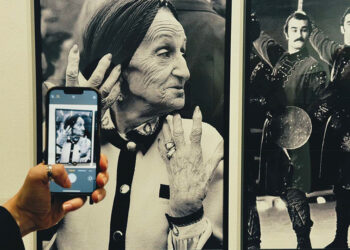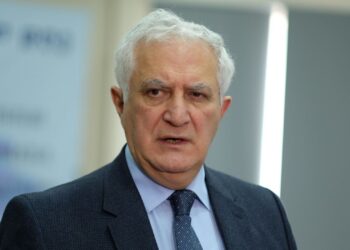Spend your summer in Shida Kartli! USAID, through the USAID Zrda Activity in Georgia, has recently provided tourism infrastructure assistance to a number of rural history and ethnographic museums in Shida Kartli. Each within a two-hour drive from Tbilisi, these museums provide both a window into Georgia’s unique history and culture and a source of employment for workers in local communities.
Overall, USAID has supported 15 museums in Shida Kartli, Samtskhe-Javakheti, Mtskheta-Mtianeti, and Tusheti, in line with the US government’s emphasis on creating jobs in Georgia’s regions while maintaining the country’s unique cultural heritage.
Below is a list of the USAID-supported museums in Georgia’s Shida Kartli region that are worth visiting when you hit the road this spring and summer.
Uplistsikhe Cave Town
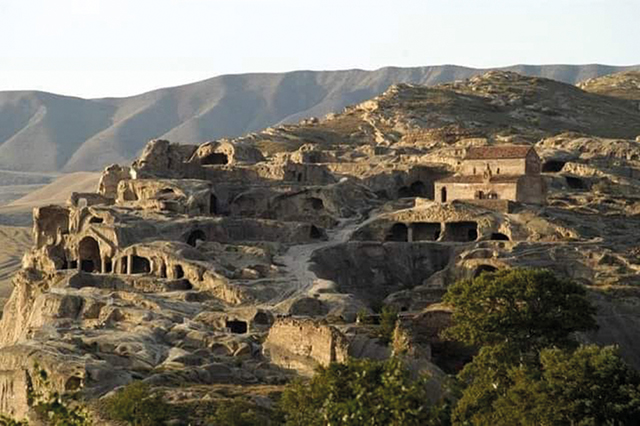
The enormous ancient cave city Uplistsikhe sits 10 km east of Gori above the north side of the Mtkvari River. Between the 6th century BC and the 1st century AD, Uplistsikhe developed into one of the main political and religious centers of pre-Christian Kartli, with temples dedicated principally to the sun goddess. After the Arabs occupied Tbilisi in AD 645, Uplistsikhe became the residence of the Christian kings of Kartli and an important trade center on a main caravan road from Asia to Europe. At its peak it housed 20,000 people. Its importance declined after King David the Builder retook Tbilisi in 1122 and it was irrevocably destroyed by the Mongols in 1240. What you can visit today is the 40,000-sq-meter Inner City, less than half of the original whole. It’s one of the oldest places of settlement in the Caucasus and almost everything here has been uncovered by archeologists beginning in 1957.
Where: Gori Municipality, Kvakhvreli village
Open: Everyday (except Monday) 10.00 – 17.00
Admission prices: Schoolchildren, pensioners and students – 1 GEL, Adults – 15 GEL, Guided tour – Georgian 25 GEL/ English 45 GEL, Audio Guide – 15 GEL
Free admission: Children up to age of 6; Pensioners, Georgian and Foreign museum staff, ICOM members (cardholders with ID), people with disabilities (upon presentation of valid ID), IDPs.
TEL: (+995 595) 520778; (+995 591) 45 03 01
Website: https://www.heritagesites.ge/en/service/6
English language guide available
Gori Historical and Ethnographic Museum
Established in 1935, the museum boasts a rich collection of archeological, numismatic, ethnographic, and epigraphic materials. It houses artifacts from the local archeological sites dating back to the 3rd-4th millennium B.C. (ceramic family seals, adornments, weapons). The numismatic collection contains Georgian coins dating back to 7th century BC, while the ethnographic collection of 18th-19th cc. is composed of Georgian and Karabakh carpets and rugs, textiles, and unique golden thread embroidery.
Where: 12 Kirion II str., Gori
Open: Every day, except Sunday and Monday, 10.00 – 18.00
Admission prices: Adults – 3 GEL, Students – 1 GEL, Schoolchildren – 0.50 GEL
TEL: +995 (0370) 27 28 67, 27 73 67
Facebook: www.facebook.com/GorisIstoriulEtnograpiuliMuzeumi
English language guide available
Jambakur-Orbeliani Palace Museum
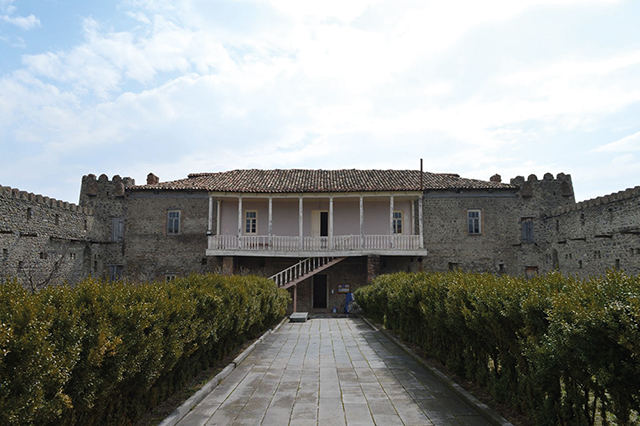
Remarkable for both its architecture and history, the Jambakur-Orbeliani Palace Museum is a cultural heritage monument from the 18th-19th centuries located in the village of Lamiskana in Kaspi municipality. It was built on the edge of a mountain slope looking out over the Ksani River valley. The castle is distinguished by its complex construction, which includes a cellar, a stable, a mill, the court (Kari) church, and a defensive wall with towers. Inside the castle palace, there is an exhibition hall and a museum library. Since 1985, the castle palace has accommodated the museum and hosted various cultural, educational, and scientific research activities and events. Museum collections include ethnographic materials from the 18th and 19th centuries, as well as numismatic artifacts, documents and photo materials, and paintings.
Where: Village Lamiskana, Kaspi Municipality
Open: Every day, except Sunday and Monday, 10.00 – 18.00
Admission prices: Adults – 1 GEL, Schoolchildren and Students – 0.50 GEL, Guided tour – 3 GEL
TEL: (+995) 555 24 37 80; (+995 577) 92 40 89
Website: www.orbelianimuseum.ge
English language guide – not available
Khashuri Local History Museum
Established in 1959, the Khashuri Local History Museum houses up to 103,000 exhibit items and archaeological remains from the local sites of the Stone Age (Satsikhuri dwelling), Bronze Age (Eastern South Caucasian axes), early and late Bronze Age (dwelling in Natsargora, Tsagvli burial objects, Akhaldaba and Tsagvli coin treasury) and early antiquity black ceramics. The site also preserves a collection of XVII-XX c.c. ethnography objects, photographs, and a collection of XX c. fine art made by Lado Gudiashvili, Gigo Gabashvili, and Alexander Tsimakuridze. The museum curators have digitized more than 100,000 exhibit items and restored a number of publications and exhibits. The museum closely cooperates with the Ashmolean Museum of Art and Archaeology based in Oxford, United Kingdom.
Where: 2, Merab Kostava str., Khashuri
Open: Every day, except Monday, 10.00 – 17.00
Admission prices: 0.50 GEL
Free admission: children up to age of 6, Georgian and foreign museum staff, ICOM members, people with disabilities, IDPs
TEL: (+995 0368) 24 01 73, (+995 0368) 24 21 08
www.facebook.com/khashurissamuzeumogaertianeba.khashuri
English speaking staff may help you with translation
Kareli Local History Museum
This museum boasts up to 3,000 exhibits, preserving various artifacts from Urbnisi, Bebnisi, Takhtidziri, Dirbi and Dvani archeological sites, of which the oldest dates back to 4th-3rd millennium BC. The institution houses the archaeological remains from local sites of the Bronze and Iron Ages (weapons and household goods, iron swords, bronze buckles, spearheads, numismatic materials, ceramics).
Where: 86, Al. Kazbegi str., Kareli
Open: Every day, except Monday, 10.00 – 18.00
Admission prices: Free admission
TEL: (+995 0369) 3 21 39
English language guide – not available
Niko Lomouri Memorial Museum
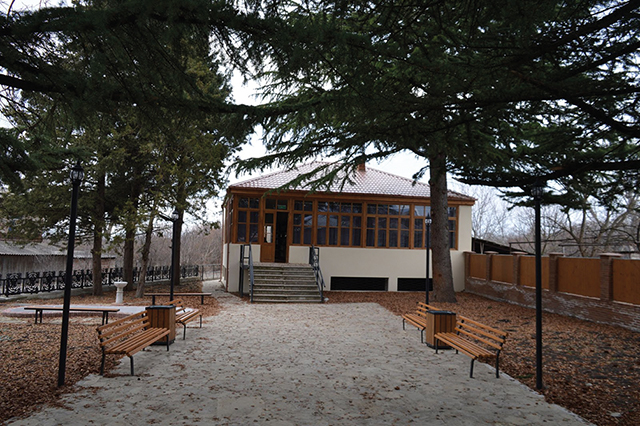
Located in the ABL Arbo village of Gori Municipality, this museum is named after the Georgian writer and educator Niko Lomouri. Having hosted a great number of educational events and activities since its establishment in 1952, the museum was seriously damaged during the 1990s and later in August 2008. In 2019, the museum was fully renovated by the Gori Municipality Mayor’s Office, and through USAID support the museum was equipped with office and audio-visual equipment, touchscreen monitors, loudspeakers, and furniture that will enable the museum management to arrange a cultural and educational space.
Where: Arbo village, Gori Municipality
Open: Every day, except Sunday and Monday, 10.00 – 18.00
Admission prices: Free admission
TEL: (+995 555) 54 54 23
Facebook: www.facebook.com/GorisIstoriulEtnograpiuliMuzeumi
English speaking staff may help you with translation.
August 2008 War Museum
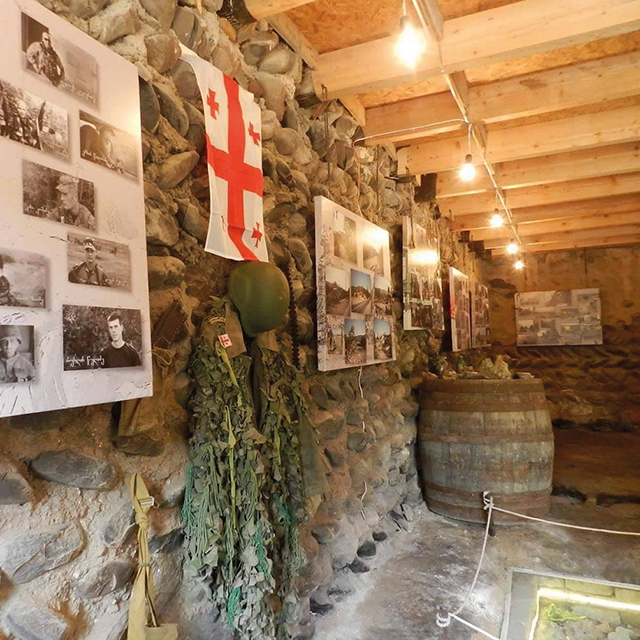
A few meters from the occupation line in Ergneti village, one can visit the August 2008 War Museum housed in the basement of the burnt down house of local resident Lia Chlachidze. Lia collected photo and video materials, burnt cloths, toys, and bomb shards shared by the people living in the village to provide historical documentation. A car shattered with bullet holes still stands in the yard of her house in Ergneti village, a symbolic and powerful vestige of the war.
Where: Ergneti village, Gori municipality
Open: Everyday, 10.00 – 18.00
Admission prices: Free admission
TEL: (+995) 599 44 51 33
Facebook: www.bit.ly/3mdnUYq
English language guide – not available


